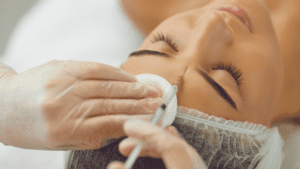In the world of skincare, few ingredients are as versatile as azelaic acid. Known for its ability to address multiple skin concerns at once, it has quickly become a staple recommended by dermatologists and skincare enthusiasts alike. Among the different formulations available, 14 azelaic acid stands out for its balance of strength and tolerability. But is it the right choice for your skin? Here’s a closer look at what makes this concentration so effective.
Benefits of Azelaic Acid 14%
Azelaic acid is a naturally occurring dicarboxylic acid derived from grains like barley and wheat. It works by gently exfoliating the skin, reducing inflammation, and controlling the overgrowth of bacteria that contribute to acne. At a 14% strength, it is powerful enough to deliver noticeable results but still gentle enough for most skin types.
One of its most celebrated benefits is its effect on discoloration. Azelaic acid helps inhibit excess melanin production, making it highly effective for evening out tone and reducing the appearance of hyperpigmentation caused by acne scars, sun damage, or melasma. Unlike harsher brightening agents, azelaic acid offers these benefits without significantly irritating the skin.
It also has anti-inflammatory properties that make it a valuable option for those with rosacea or sensitive skin prone to redness. By soothing irritation while addressing underlying causes of breakouts, azelaic acid creates a more balanced, even complexion over time.
14% Azelaic Acid vs Other Strengths
Azelaic acid can be found in different concentrations, typically ranging from 10% over-the-counter formulas to 15–20% prescription versions. Lower-strength products are ideal for those new to actives or with highly sensitive skin, but they may deliver slower or less dramatic results. Higher concentrations can provide faster improvements but sometimes come with increased risks of dryness, tingling, or irritation.
That’s where 14 azelaic acid strikes the perfect balance. Strong enough to tackle acne, dark spots, and redness, yet still gentle enough for daily use, it’s an excellent middle ground for individuals who want visible results without overwhelming their skin barrier. For many, it’s the “sweet spot” concentration that addresses multiple skin concerns in a single product.
Pairing azelaic acid with complementary skincare can enhance its benefits. Hydrating products, sunscreens, and barrier-strengthening treatments work well alongside it to maintain balance. And while azelaic acid supports skin health externally, overall beauty routines can also benefit from internal support—like hair supplements that strengthen hair from within, showing how holistic care can elevate both skin and hair health together.
The Bottom Line
If you’re looking for a multitasking ingredient that addresses breakouts, redness, and dark spots, 14% azelaic acid may be the right fit. Its unique combination of antibacterial, anti-inflammatory, and brightening properties makes it a smart choice for anyone seeking clearer, more even-toned skin.
By choosing a balanced strength like 14 azelaic acid, you can experience noticeable improvements without the irritation often associated with stronger actives. It’s a solution that proves effective skincare doesn’t have to be harsh—it just has to be consistent and tailored to your skin’s needs.




